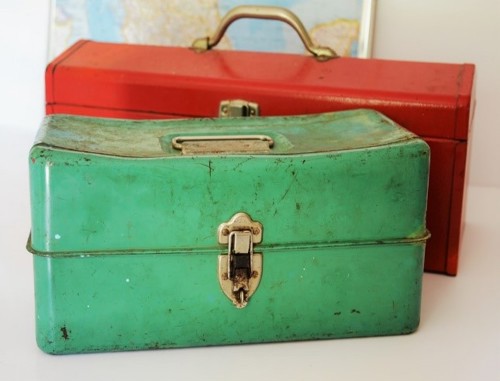Scaffolding a Difficult Conversation
I’m having a productive weekend, sorting out jobs that need done outside. Spring is here and I need to get ready. One issue I’ve successfully avoided for a while – both because of the potential financial nightmare and the sheer hassle - is to get the chimney fixed. There’s a big loose stone that’s just not up to the job anymore and I need to bite the bullet and deal with it or the whole chimney could come down. I’ve been ignoring this for over a year now…
But not today.
I call the stonemason I had over last year and he tells me I’m going to need scaffolding but the sooner we can get it done the better. He assures me scaffolding will make it safe and he can put all that in place the day before he addresses the issue with the rogue stone.
Another thing I have been known to avoid are difficult conversations. We all do that a bit, don’t we? Sometimes we hope that if we wait it out the issue might just magically fix itself. This option hasn’t worked out for me yet. Bit of a shame really. By difficult conversations I mean the ones where you know the other person may not agree with you, but you have to say something because if you don’t there’s the risk of it turning into a loose stone that threatens the integrity of the structure.
Basic advice suggests we can work on our own delivery in order to improve things. Be direct and be specific because “Difficult conversations become even more difficult when the delivery is muddled.” (1) Furthermore, we should be prepared to offer up a solution, giving options to move things forward.
Now, I’m not sure why we avoid or dread these conversations. Part of it may stem from the fact that we have chosen to work with young people as our default setting is to be nurturing, to help others. And bottom line, it’s just nice to be nice. However the longer I was in the job, the more I was called on to have difficult conversations with other teachers, professionals, parents and carers, pupils. Part of our success in these situations will come from experience – and some will be helped by our ability to empathise. However, in “Having Hard Conversations” Jennifer Abrams gives us something practical to add to our toolbox…

At the end of last week we were lucky enough to meet with Abrams. She is the fairy godmother of the difficult conversation. She started life as teacher and amassed over 20 years of experience as an English teacher, coach and facilitator. She has now written many books specialising in communications. She was discussing her body of work and how she advocates for considered preparation to help negotiate a challenging situation. I liked this. Part of being busy is that we need something practical that we can use. We need a take away.
Abrams explains clarifying conversations (at most two) form the basis on which the difficult conversation rests. We need to have clarified what the problem is and shared this with the other party.
If there is no change after an agreed period then we need to prepare for a difficult conversation. To equip us, Abrams offers her outcome map. This practical map should be considered and carefully planned prior to the difficult conversation.
In her outcome map we need to be clear on the following:
- the presenting problem
- the tentative outcome
- desired behaviours
- internal resources needed by the person
- intervention strategies you can offer
- internal resources you offer
Abrams is clear on the benefits: “Problems seem less overwhelming and easier to manage once one begins to answer the questions the map provides.” (2)
It should also help us approach the conversation with a bit more confidence. Preparation is everything and there are other factors we can give thought to before the event. Abrams notes the importance of the timing. Imagine coming into work on a Monday morning to be faced with a difficult conversation with your line manager. How would that person feel? They might be expected to head straight into a meeting or even teach a class after it. This isn’t conducive to optimal concentration in the meeting and doesn’t allow the person time to process the conversation after the event.
We should show integrity and empathy in our dealings with others in difficult conversations, in every conversation, always.This doesn’t mean we cannot speak with conviction and determination to effect change; we just need to concentrate on behaviours and their impact and stay away from feelings and emotion. Fact is where it’s at in a difficult conversation.
There is also the question of body language and the way our non-verbal communication can afford us what Abrams describes as ‘credible energy.’ Amongst other pointers she advocates two feet on the floor, strong spine, palms down. If we appear grounded and strong then the tone of the conversation is set even before the talking begins.
I’ve only got another week to wait before the stonemason appears. Then I can stop thinking about the chimney and look forward to the feeling of relief that it has been dealt with and disaster averted.
If you have the scaffolding in place, the loose stone can be given your full concentration.
References:
1. How To Have Difficult Conversations At Work (forbes.com)
2. Getting Unstuck: Using an Outcome Map for Effective Problem Solving - Jennifer Abrams
Further study:
This hour long webinar is a great general introduction to Abrams’ work around difficult conversations.
Having Hard Conversations: Tips for Middle Leaders - Jennifer Abrams
This podcast by The Teachers’ Education Review, Australia is also really useful for an overview of communication in the education workspace, as well as Having Hard Conversations. (Starting at 30mins)
TER #103 – Having hard conversations with Jennifer Abrams – 12 Nov 2017 | Teachers' Education Review (terpodcast.com)
